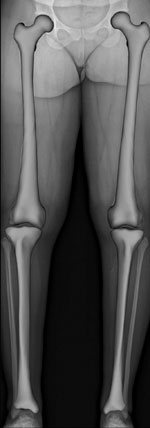Some knee surgeons find patient-specific instruments useful, but still too costly
Presenters noted the high cost of patient-specific instruments makes it hard to justify their use, but agreed the technology holds promise for the future.
ORLANDO, Fla., USA — Patient-specific instrumentation has been associated with a simpler surgical procedure, but it may not be cost effective or efficient enough to achieve that in all but the most specific surgical settings, according to presenters at the Current Concepts in Joint Replacement Winter Meeting, here.
At the meeting, Robert L. Barrack, MD, of St. Louis, debated Mark W. Pagnano, MD, of Rochester, Minn., USA, on strategies for using patient-specific instrumentation (PSI).

Robert L. Barrack

Mark W. Pagnano
“Today, I think surgeons at two ends of the spectrum are the most likely to see benefit from patient-specific instruments: the high volume joint subspecialist who is personally committed to efficiency is going to see some potential benefits, and then the lower volume surgeon in a lower volume hospital who can benefit markedly from the simpler instrumentation and the fewer surgical steps,” Pagnano, at the Mayo Clinic, said.
Barrack noted, “It does add expense and the cost-benefit has not been established. There is no evidence currently that [PSI] results in improved satisfaction, function or implant survival.”
Barrack said that when he used PSI, he noticed an 11 minute to 12 minute reduction in operating room time and about $320 (US) savings per case. But, he said that was “overwhelmed by the cost of the guide and the cost of the MRI,” and imaging to create the three-dimensional (3-D) patient-specific models.

In his presentation, Barrack used 3-D reconstruction to show a normal adult male with 5º constitutional varus.
Image: Barrack RL
Reducing outliers
In the literature, the ability to decrease coronal outliers was fairly mixed, according to Barrack.
There is strong evidence to support that not every patient has the same ideal alignment target and constitutional varus and valgus outliers were common.
“PSI can decrease coronal plane outliers but results are variable,” he said.
Concerning alignment benefits of PSI, Pagnano said, “As our understanding of ideal limb alignment and component orientation improves, it would become clear that 3-D positioning of implants is important and patient-specific instruments allow us to explore these new concepts.”
Value for specialty surgeons
According to Pagnano, high volume surgeons can turn the reduced operating room time that PSI provides into another completed case each day, thus increasing hospital volume. This could potentially mean an overall 10% increase in volume, which at the Mayo Clinic means more than $1 million (US) in net operating income, including recouping CT, MRI and other instrumentation costs, he said.
Furthermore, in those hospital settings where getting operating personnel accustomed to using more complex instrumentation leads to longer operating room times, lower volume surgeons who use PSI may save 35 minutes to 50 minutes per operation — much more than the average 11 minutes per case, Pagnano said. – by Jeff Craven
Reference:For more information:
- Barrack RL, Pagnano, MW. Patient specific cutting blocks: Of unproven value. Papers #103 and #104. Presented at the Current Concepts in Joint Replacement Winter Meeting. Dec. 7-10, 2011. Orlando, Fla., USA
- Robert L. Barrack, MD, can be reached at Washington University School of Medicine, 660 S. Euclid Ave., Campus Box 8233, Department of Orthopedic Surgery, St. Louis, MO 63110 USA; +1 314-747-2562; email: barrackr@wustl.edu.
- Mark W. Pagnano, MD, can be reached at 200 First St. SW, Rochester, MN 55944 USA; +1 507-284-5276; email: pagnano.mark@mayo.edu.
- Disclosures: Barrack receives grant/research support from NIH, Biomet, BiospaceMed/EOS, Medical Compression Systems, Smith & Nephew Orthopaedics and Wright Medical Technology. He is a consultant to and designer for Stryker Orthopaedics. Pagnano receives royalties from DePuy and MAKO Surgical Group and is a consultant to Stryker Orthopaedics.





